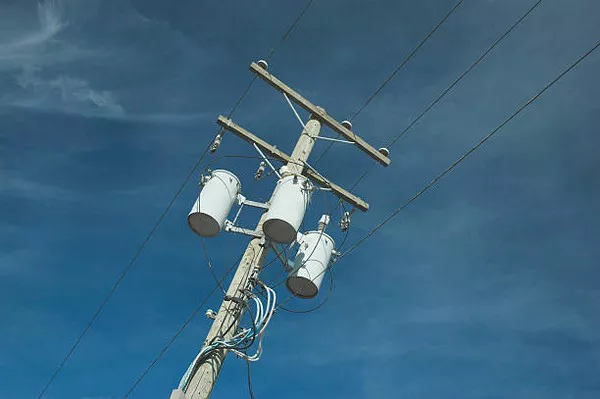In the realm of electrical engineering, transformers play a pivotal role in the efficient transmission and distribution of electric power. Among various types of transformers, the step-up transformer holds a significant position due to its unique ability to increase voltage levels while decreasing current, thereby facilitating long-distance power transmission and efficient distribution. This article delves into the fundamental principles, applications, and advantages of step-up transformers, elucidating their crucial role in modern electrical systems.
Understanding Transformers: A Fundamental Overview
Transformers are devices that facilitate the transfer of electrical energy between circuits through mutual electromagnetic induction. They operate based on Faraday’s law of electromagnetic induction, where a changing magnetic field induces an electromotive force (EMF) or voltage in a conductor. The primary components of a transformer include primary and secondary windings wound around a common core, usually made of laminated iron to enhance magnetic flux.
The basic operation of a transformer involves alternating current (AC) flowing through the primary winding, creating a fluctuating magnetic field in the core. This magnetic field then induces a voltage in the secondary winding through mutual induction, which is proportional to the turns ratio of the windings.
Step-Up Transformers: Function and Operation
A step-up transformer is designed to increase the voltage from the primary winding to the secondary winding. This increase in voltage is achieved by having more turns in the secondary winding compared to the primary winding, according to the turns ratio equation 𝑉𝑠/𝑉𝑝=𝑁𝑠/𝑁𝑝 , where Vs and Vp are the secondary and primary voltages, respectively, and Ns and Np are the number of turns in the secondary and primary windings.
The primary function of a step-up transformer is to step up the voltage level while stepping down the current proportionally, maintaining the power equilibrium (ignoring losses). This transformation of voltage levels is essential for several critical applications in electrical power systems.
Applications of Step-Up Transformers
1. Power Transmission
In electrical power transmission systems, step-up transformers are employed at generating stations to increase the generated voltage before transmitting electricity over long distances. Higher voltages reduce energy losses during transmission, as power loss in a transmission line P=I *I*R is directly proportional to the square of the current (where P is power loss, I is current, and R is resistance). Thus, by transmitting power at high voltages and low currents, efficiency is significantly improved.
2. Electrical Distribution
Once electricity reaches substations from generating stations, step-down transformers are used to reduce the voltage to levels suitable for distribution to homes, businesses, and industrial facilities. This step-down process ensures that the electricity supplied to consumers is safe and manageable.
3. Industrial Applications
Step-up transformers find extensive use in various industrial applications where high voltage is required for equipment operation. Industries such as mining, manufacturing, and chemical processing often require high-voltage electricity for heavy machinery, arc furnaces, and other specialized equipment.
4. Renewable Energy Integration
In renewable energy systems, such as wind and solar power plants, step-up transformers are crucial for increasing the voltage of electricity generated by turbines or solar panels before integrating it into the grid. This voltage increase ensures efficient transmission and integration of renewable energy into the existing electrical infrastructure.
5. Railways and Transportation
Electric railways and other forms of electrified transportation systems utilize step-up transformers to convert the standard voltage levels to higher voltages suitable for efficient power distribution along rail lines. This adaptation enables the smooth and reliable operation of electric trains and other transit systems.
Advantages of Step-Up Transformers
1. Enhanced Efficiency
By reducing energy losses during transmission (due to lower current at higher voltages), step-up transformers contribute to the overall efficiency of electrical power systems. This efficiency gain is critical for minimizing environmental impact and reducing operational costs.
2. Scalability and Flexibility
Step-up transformers can be designed and adapted to accommodate varying voltage requirements, making them highly versatile in diverse applications across different industries and sectors.
3. Safety and Reliability
The controlled increase in voltage through step-up transformers ensures that electrical power can be safely transmitted over long distances without compromising safety or reliability. This factor is particularly crucial in maintaining stable power supply networks.
4. Economic Viability
Despite initial investment costs, the long-term economic benefits of using step-up transformers include reduced operational expenses and enhanced system reliability, making them a cost-effective solution for power transmission and distribution.
Challenges and Considerations
While step-up transformers offer numerous advantages, they also pose certain challenges and considerations:
1. Size and Weight
Large step-up transformers can be bulky and heavy, requiring significant space for installation and maintenance. This factor needs to be carefully considered in urban and densely populated areas.
2. Maintenance Requirements
Regular maintenance and monitoring are essential to ensure the optimal performance and longevity of step-up transformers. This includes inspections for insulation degradation, oil quality (in oil-cooled transformers), and cooling systems.
3. Environmental Impact
Although step-up transformers contribute to energy efficiency, their manufacture and operation involve environmental considerations, such as the disposal of transformer oils and the materials used in construction.
Future Trends and Innovations
The future of step-up transformers lies in advancements aimed at improving efficiency, reducing size and weight, enhancing reliability, and integrating smarter monitoring and control technologies. Innovations in materials science, insulation technology, and digital monitoring systems are expected to drive the evolution of transformer design and performance.
See Also WHAT IS SINGLE PHASE AND THREE PHASE TRANSFORMER
Conclusion
In conclusion, step-up transformers play a critical role in modern electrical systems by enabling efficient power transmission, distribution, and utilization across various sectors. Their ability to increase voltage levels while minimizing energy losses makes them indispensable components of electricity networks worldwide. As technology continues to evolve, so too will the design and application of step-up transformers, ensuring sustainable and reliable electrical power supply for future generations. Understanding their operation, applications, and benefits is essential for engineers and stakeholders involved in the energy sector, paving the way for a more efficient and interconnected electrical infrastructure.


